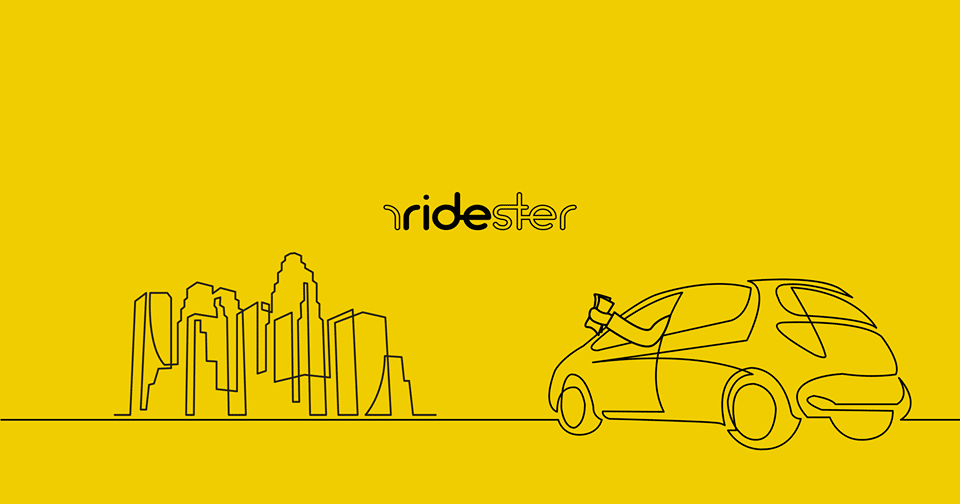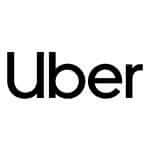Every month, over 50,000 drivers join Uber – adding to the already large population of a million drivers in the US alone!
It’s not surprising that so many choose to become an Uber driver. After all, it is an attractive job for many reasons, with the primary one being flexibility.
However, before you jump into Uber driving, it’s worth learning the nitty-gritty details – especially surrounding pay.
In this article, we’ll break down how much Uber drivers make! We’ll explore:
- The average pay Uber drivers receive
- The factors affecting a driver’s payment
- The comparison between the base fare and total earnings
- What expenses and deductions to consider
- Pros and cons between full-time and part-time driving
- How payouts work.
Ready to get driving? Let’s start!
- How Much Do Uber Drivers Make? [Summary]
- How Much Do Uber Drivers Make? A Quick Answer
- How Much Do Uber Drivers Really Make?
- Our Take: Analyzing These Numbers
- Factors That Impact Uber Driver Earnings
- 1. Location and City Demand
- 2. Time of Day and Day of the Week
- 3. Type of Vehicle Used
- 4. Driver Availability and Hours Worked
- 5. Surge Pricing and High-demand Times
- 6. Driver’s Rating and Customer Reviews
- 7. Driving Expenses (Fuel, Maintenance, Insurance)
- 8. Incentives, Bonuses, and Promotions
- 9. Distance and Duration of Trips
- 10. Weather and Road Conditions
- 11. Competition among Drivers in the Area
- 12. Passenger Tips
- 13. Local Regulations and Fees
- 14. Seasonal Fluctuations in Demand
- How Can You Earn More?
- Frequently Asked Questions
- Wrapping Up
- References
How Much Do Uber Drivers Make? [Summary]
Quickly understand how much Uber drivers make. Our article below, summarized:
High-Level Stats
- Average Uber driver income: approximately $11.77 an hour after accounting for Uber fees and other expenses
- Only 3% of Uber drivers remain after a year, indicating a high turnover rate
- Many use Uber driving as a side gig, valuing the flexibility it offers
Earnings Variation by Location
- Highest-paying areas: San Francisco, Seattle, and Long Island, NY (~ $25 per hour)
- Lowest-paying cities: Tampa, Houston, and Springfield, MO (under $9 per hour)
- Only in New York City can UberX drivers expect to average over $20 per hour
Post-Pandemic Earnings
- Before the pandemic’s impact in 2020, drivers averaged $19.36 per hour.
- As the pandemic progressed, this average dropped to $8.79 per hour.
- 92.1% of drivers reported a decrease in earnings during the pandemic.
- 89.5% saw at least a 50% drop in earnings since lockdowns began.
- Some drivers reported earning as low as $4.50 per hour after expenses.
Related: How Much Do Lyft Drivers Make?
How Much Do Uber Drivers Make? A Quick Answer
According to a recent policy report, the average income a driver receives after accounting for Uber fees and other expenses comes to only $11.77 an hour. As such, an Uber driver earns less than 90% of workers!
Uber drivers also experience a high turnover rate. This means many drivers leave Uber and the company has to replace them quickly. In fact, only about 3% of drivers remain after a year!
What attracts many to Uber driving is the flexibility that comes with it. Many drivers often use Uber as a side job as opposed to their main income.
Sticking with Uber often depends on how much you value your freedom and the flexibility of Uber driving.
However, many Uber drivers also know that their full earnings can vary based on different factors. These include trip opportunities, expenses, and demand.
That’s the high-level, quick answer. Now let’s go a tad more in-depth.
How Much Do Uber Drivers Really Make?
To determine how much Uber pays drivers, it’s important to look at some cold hard data.
Keep in mind, the numbers we are using in this article are used as a general representation of what the average Uber driver wage amount incoming reports are stating.
To get a bit closer to the mark, here are some reputable sources.
1. Uber Driver Pay According to Ridester.com

How Much Were Uber Drivers Earning In 2018?
The Ridester 2018 Independent Driver Earnings Survey is an excellent source on how much Uber drivers are earning, as it is one of the most in-depth studies of rideshare driver income reported to date.
For this survey, drivers self-reported their earnings and total income and provided screenshots from Uber to back up their claims. What the survey shows is rather remarkable.
The survey polled over 2,600 drivers with 62,583 paid hours totaling $1,027,585 in earnings. Here’s the breakdown of median hourly income for the various vehicle types:
- UberX drivers earn $13.70/hour
- UberXL and UberSELECT drivers earn $14.85/hour
- UberSUV and UberBlack drivers earn $25/hour
When it comes to tips, over 90% of UberX drivers reported receiving no tips or tips less than $5. With tips added in, the average hourly rate for an UberX driver is $14.73.
Regarding tips, the survey shows that drivers report earnings 35.53% higher than they actually are. It also shows that drivers aren’t satisfied with their profits.
Caveat: it is worth pointing out that the national average hourly wages vary quite a bit per the type of Uber service provided.

How Much Were Uber Drivers Earning After the Pandemic?
Due to the success of the 2018 survey, the Ridester team checked in with drivers to see how the 2020 pandemic had impacted their earnings.
170 drivers responded, offering insights based on their experiences from March 16 to March 26, during which many cities initiated lockdowns. As it turns out, things looked bleak.
In comparing the 2018 and 2020 figures:
In late 2018, drivers were earning an average of $14.73 per hour. Before the pandemic’s impact in 2020, this had risen to $19.36 per hour.
However, as the pandemic progressed and affected business, this figure plummeted to an average of $8.79 per hour by March 2020.
Before Pandemic Impact:
- Driver earnings had increased by 31% from the previous year due to high driver churn which compelled Uber and Lyft to hike driver pay with incentives and bonuses.
- On average, drivers were earning $19.36 per hour, up from $14.73 in late 2018.
Post-Pandemic Impact:
- Driver earnings dramatically plummeted. A survey of 170 drivers showed earnings averaging around $8.79 per hour.
- A significant portion of drivers ceased operations entirely, some due to health concerns and others due to lack of business.
- 92.1% of drivers reported a decrease in earnings. 89.5% experienced at least a 50% drop in earnings since the onset of lockdowns.
- 76% had difficulties covering routine car expenses, such as gasoline.

Additional Factors
- Some drivers earned as little as $4.50 per hour after car expenses.
- Many reported zero earnings, indicating they’ve stopped driving.
- One of the top earners made $326.77 in a week but at an effective rate of $5.11 an hour, suggesting the driver lost money after considering car expenses.
Delivery Services as an Alternative?:
- Delivering for services like Grubhub, Postmates, and DoorDash could be an option for rideshare drivers.
- However, concerns about the virus’s survival on packaging materials, especially cardboard, have been raised, making some drivers hesitant.
- 20% of drivers have already shifted to deliveries, but 37% noticed a decrease in business in this field as well.
Impact on Uber and Lyft:
- The two companies face potential troubles, with significantly reduced business and a risk of losing many drivers permanently.
- Historically, these companies offered substantial recruitment bonuses, with some reaching $1,000 for Lyft and over $2,000 for Uber. This might become a challenge in the future.
- 72% of drivers reported driving less, primarily to protect their health or due to decreased demand. Around 7% have switched to other jobs.
Analysis:
- The rapid decline in earnings is shocking, especially when contrasted against the surge seen just weeks before.
- The primary revenue sources for drivers (morning and afternoon commutes, restaurant/bar business, large public events, and airport travel) have nearly vanished.
- The situation poses severe challenges for gig workers who lack many protections traditional workers enjoy.
- New York City, given its strict “for-hire driver” licensing requirements, may face a significant decline in drivers due to financial hardships.
SherpaShare’s Smart Driver tools assist rideshare drivers with the process of spotting lucrative routes in their city. Since they also offer bookkeeping tools, SherpaShare has info on how much drivers earn after taking expenses into consideration.

According to SherpaShare, many entry-level Uber and Lyft drivers are not even breaking minimum wage.
Of course, this is only a portion of the rideshare industry. Having said that, it appears that in the vast majority of the country, Uber drivers make around $11 an hour.
If you’re making only $11 an hour, it would be very difficult to drive for Uber as a full-time job. This may not matter to you as much if you’re driving for Uber part-time, but keep in mind there are many ways to boost your earnings (we’ll get into that later).
3. Uber Driver Pay According to Glassdoor
Glassdoor is an excellent resource for getting insider information about companies, including Uber. Their reputable system makes it easy for users to report how much they are making as well as the pros and cons of working at said company.
According to Glassdoor, the average Uber driver makes around $14–$15 per hour nationwide.
As we mentioned with SherpaShare, this hourly earnings estimate may only represent a handful of reports. Furthermore, be aware that the hourly estimate may not include driving-related expenses.
In an attempt to offset the low rates, some drivers are taking advantage of signup bonuses and referral codes being offered. Capitalizing on Uber driver referral codes is pretty tempting too, considering some of them are worth hundreds of dollars.
Many speculate that Uber is using this type of marketing plan in an effort to compete with Lyft. Currently, Lyft is giving away bonuses worth up to $1,000.
Now that we’ve discussed how much drivers earn, let’s take a dive into the why – the factors that go into what they earn.
Our Take: Analyzing These Numbers
Now let’s take a look at the numbers and see what they mean.
It’s clear that driver earnings are low. So this begs the question, why do so many people continue to drive with Uber?

It comes as no surprise that where you drive also affects how much you can earn.
- San Francisco, Seattle, and Long Island, NY rank among the highest-paying areas, with drivers averaging around $25 per hour.
- Tampa, Houston, and Springfield, MO rank among the lowest-paying cities with drivers averaging under $9 per hour.
- Akron, OH is the city with the lowest hourly rate by far.
Drivers are making just $4.94 per hour, which is substantially less than the minimum wage. In most cities, UberX drivers aren’t exactly raking in the big bucks either.
The data shows that New York City might be the only city in the country where UberX drivers can expect to average over $20 per hour. But if you’ve lived in, worked in, or visited Manhattan, you know that $20 doesn’t go very far.

Another interesting thing we learned from the Ridester survey is the way that riders tip. The reality is, most passengers don’t tip at all.
- 36% of drivers claim to receive no tips at all in an average night of driving
- 28% claim to receive less than $5
- Approximately 10% say they earn tips between $6 and $10
- 7% of drivers receive between $11 and $15 in tips each night
- Only 10% report earning more than $16 in tips in an average night
The results of the survey show another interesting thing: most Uber drivers are not satisfied with their earnings and based on the numbers above, this isn’t too surprising.
- 70% of all drivers gave Uber three or fewer stars (out of five) on income satisfaction.
- The average satisfaction rating by drivers is only 2.9 stars out of five.
If Uber wants to retain their drivers and bring on more, they’re going to have to do a whole lot better. So are drivers sticking around?
On average, 46.4% of Uber drivers stay with the company for less than one year. 23.5% say they have driven for Uber for one year, 19.2% for two years and only 11% have stuck around for three years or more.
If you can make good tips and leverage your Uber referral code, you are likely to see higher earnings and better profits.
Currently, Uber is offering hundreds of dollars in bonuses for drivers that refer other drivers. Drivers can also earn an extra $5 per passenger for every new rider they bring to the rideshare service.
To sum it up, Uber earnings vary from city to city. New York drivers earn about $29.34 per hour, while Nashville drivers earn an hourly rate of $8.11.
Factors That Impact Uber Driver Earnings
By understanding what goes into each fare, we can find opportunities for you to earn a few extra bucks during your shift.
- Location and City Demand
- Time of Day and Day of the Week
- Type of Vehicle Used
- Driver Availability and Hours Worked
- Surge Pricing and High-demand Times
- Driver’s Rating and Customer Reviews
- Driving Expenses (Fuel, Maintenance, Insurance)
- Incentives, Bonuses, and Promotions
- Distance and Duration of Trips
- Weather and Road Conditions
- Competition among Drivers in the Area
- Passenger Tips
- Local Regulations and Fees
- Seasonal Fluctuations in Demand
Related: How Much Does Uber Cost?
1. Location and City Demand
Busy city centers are hotspots for riders. It’s full of bustling business people on their way to their next meeting, best friends late to a cocktail party, and even everyday commuters who just don’t want to brave the rain!
As an Uber driver, choosing to drive in high-demand areas means you’re more likely to have more riders — giving you higher earnings.
2. Time of Day and Day of the Week
I’m sure many experienced the horror of high Uber prices as they tried to get home from a late-night, Saturday party in the city.
During special times and days, prices can double (or even triple) due to demand. Therefore, it’s worth considering these times and checking the Uber estimate when choosing your driving hours!
Maybe it’s just a regular, weekly demand peak or because a superstar like Taylor Swift is performing in town. Whatever the case, it’s a good idea to know what’s happening in your city and use it to your advantage!
3. Type of Vehicle Used
A great way to maximize your Uber driving time is with your car. Here are a few characteristics you should consider, specifically: reliability, fuel efficiency, safety, and comfort.
The good news is that there are plenty of suitable options out there! Here are the three top choices listed by Go Far:
- 2018 Toyota Camry. A very reliable car with rear-seat legroom for customers
- 2017 Toyota Prius Two Hatchback. One of the best miles-per-gallon fuel efficiency for its size
- 2018 Chevrolet. High fuel efficiency for all-day driving.
These are some great options to consider. However, your decision will still come down to what’s available in your area.
4. Driver Availability and Hours Worked
When you think about how much the prices differ depending on the timing, your availability will hugely impact your earnings!
Working more often (and at peak times) will give you a higher income. You’ll also need to work a certain number of hours at minimum to make it worth your while.
5. Surge Pricing and High-demand Times
During bad weather, rush hour, or special events, many people are looking to book Uber at the same time. To make sure only those who really need a ride get one, prices go up. This is known as surge pricing.
Some riders will wait it out, while others will bite the bullet and book anyway. If you want to take advantage of the higher demand, watch out for orange and red areas on the map.
6. Driver’s Rating and Customer Reviews
Great customer service is a brilliant way to increase your earnings. With Uber, there aren’t a lot of opportunities to build rapport with your customers.
As such, making sure your customers have the best experience possible with you means your Uber rating will improve. This increases the chances of getting tips and boosting your income!
7. Driving Expenses (Fuel, Maintenance, Insurance)
One of the major things to remember about Uber driving is the expenses.
In the long term, this includes financing, insurance, registration, tax, and depreciation. For the short term, you’ll pay for fuel, maintenance, cleaning, mobile data fees, and more.
Your expenses can hugely impact gross earnings, so try to minimize them as much as possible!
8. Incentives, Bonuses, and Promotions
Uber also frequently offers promotions to attract drivers during high-demand times in special areas.
Boost+ is one example! This promotion pays extra for trips to a specific place and time.
There are also Quests, which are like missions that allow you to earn a little extra. For example, if you complete a certain number of trips within a specified time frame, you’ll earn more.
With one particular Quest, a driver can earn an additional $100 for completing 30 trips over three days!
9. Distance and Duration of Trips
It’s simple, really: The longer the distance and duration of each trip, the more you’ll be paid.
This means that it’s a good move to consider every offer that comes up for you, as well as wait longer for a better offer!
10. Weather and Road Conditions
Bad weather and traffic cause surge pricing due to high demand. Keeping these factors in mind can help you increase your earnings.
11. Competition among Drivers in the Area
While surge pricing is a great way to add to your income, other Uber drivers are also fully aware of it! As a result, this can create competition in your local area during peak times.
What this means for you is that how much more you actually earn can vary depending on how many drivers you’re competing against.
12. Passenger Tips
Drivers get to keep 100% of their tips. Considering that the average customer tips 10–20% of the ride cost, you can really boost your earnings by focusing on maximizing the amount tipped!
13. Local Regulations and Fees
Every location has different regulations for rideshare platforms. This can include driving-hour requirements that limit how long you can spend on a platform, as well as other rules displaying stickers on your vehicle.
Understanding the local regulations can help you avoid fines and penalties. It’s important to know these before hitting the road as they can affect your income significantly!
14. Seasonal Fluctuations in Demand
Since it’s the holiday season, Uber’s revenue is higher during the fourth quarter every year. However, the summer vacation season (third quarter) sees lower revenue. Planning your hours according to seasonal changes can help you earn more!
How Can You Earn More?
There are a few things you can do to ensure that you make a higher hourly wage.
1. Drive During Busy Times
If you decide to drive during the busiest hours that have the highest demand, you’ll likely be racking up surge bonuses that multiply your total fare.
Smart drivers will take advantage of surge pricing and plan their shifts around when they think they have the best opportunity to receive these inflated fares.
When there are big events, inclement weather, or rush hour traffic, fares will be multiplied by up to 2x.

Head to Uber’s website to get a detailed description of your city’s best locations and times to drive.
Every city has their own hotspots, but to give you an idea here is a breakdown of San Francisco’s high demand locations and times.
If you plan your drive time around these factors, you’ll receive the biggest bang for your buck and your hourly earnings will skyrocket. A simple $15 fare could increase to $30 if you receive a 2x surge multiplier.
2. Offer Great Customer Service
Another way experienced drivers earn an increased fare is by providing excellent customer service.
If you give passengers a great overall experience, you have a better chance of receiving a tip from them. Uber doesn’t take a percentage of your tips, so you’ll keep 100 percent of the tips you receive.
Provide great service and you may earn a few extra bucks here and there from your passengers.
3. Income Differences of Driving Programs
A sure way to bring in a higher paycheck is to enlist in higher-paying driving programs.
If you own or lease a vehicle that qualifies for a more premium Uber option, then you should definitely take advantage of this.
UberX is the default option that all drivers will qualify to drive for, however, UberX is at the bottom of the totem pole when it comes to earnings. UberX is the lowest-paying service level.
After Uber takes their commission, drivers at this level only make $0.73 per mile driven. Depending on what vehicle you own, you may qualify for more driving options that offer higher wages.

For instance, if you own a larger vehicle like a van or SUV, you can start driving for UberXL. Drivers at this service level make almost double what UberX drivers do, bringing in $1.26 per mile driven.
Better yet, if your larger vehicle is new and has that luxurious feel, you could even qualify for UberSUV, which is a luxurious SUV option.
Drivers at this stage bring in a whopping $3.00 per hour. That is over four times what an UberX driver makes when looking at per mile driven.

These high-end Uber options mean higher fares for passengers. It also means that you’ll be dealing with a different type of customer.
Customers who are using the more premium options that Uber offers are paying more and will expect a higher level of service. If you deliver a great experience, you can hopefully earn higher tips to match your service.
4. Expenses You Must Pay
What many new drivers will forget is the fact that there are many expenses tied to driving for Uber.
It’s easy to be distracted by the thought of being your own boss, scheduling your own hours, and receiving those big paydays that surge multipliers will yield. The expenses that drivers are responsible for can quickly offset the wages you’re making.
As we mentioned before, once you subtract all of these expenses, median hourly earnings drop from about $14 per hour to below $10. That’s a huge difference!
The downside of driving for Uber is that you’re responsible for all of these personal expenses. Very few things are covered by Uber, leaving you with the bill when it comes to many expenses.
Uber doesn’t provide any financial assistance when it comes to the following expenses:
- Fuel
- Automobile insurance
- Vehicle maintenance
- Cleaning fees
- Personal taxes
In regards to personal taxes, it’s important to remember that you’re an independent contractor and will be responsible for all of your own taxes.
Your taxes won’t be withheld, so make sure you remember to set some cash aside for when tax season rolls around once a year.
5. How Much Are You Willing to Put In?
As a driver, you have a great deal of control as to how much you’ll make. The single biggest factor is how much you’re willing to put in.
If you only work a few hours here and there, you’ll likely not have a large paycheck and potentially a lower per-hour rate.
But if you treat your new career as a full-time job, give great customer service, drive in the right locations, and take advantage of surge pricing as much as possible, your driver earnings will be much higher.
The more experience you get as a driver, the more you’ll understand how to make a higher income and be more satisfied with your new employment in the gig economy.
Frequently Asked Questions
How Do Uber Payouts Work?
With Uber, you can choose how to be paid. For example, you can opt for a free, weekly bank transfer, though immediate cashouts are also an option. If you want to get your money quickly, you can opt for immediate cashouts up to five times a day!
Is Driving Part-Time Or Full-Time Better?
There are pros and cons to both full-time and part-time driving.
For part-time drivers, they have the benefit of driving around their schedule. There’s more freedom for other commitments, especially if they have a full-time job. However, the biggest disadvantage is obvious: less earnings!
Full-time drivers will always make more money, but relying on Uber might not be the best long-term option. This is due to the unpredictability of the work.
Can Drivers Deduct Expenses?
Aside from Uber fees, there are other expenses that you need to keep in mind at all times.
These can include fuel costs, toll fees, car maintenance, car wash, registration, and insurance. If you’re unlucky, you might also need to pay for traffic violations.
Depending on the costs, these can seriously affect your overall earnings! That’s why many Uber drivers prioritize getting fuel-efficient and reliable cars.
What is the Difference Between Base Fare and Total Earnings?
A base fare is what you’re guaranteed to earn from each drive. Other things such as time and distance can boost your pay, which will then add to your total earnings for a trip.
In some cities, demand, delays, and destination distance can boost your base fare. It’s best to consider it as a bonus from a trip — not as something you should fully depend on.
Wrapping Up
As a short-term, part-time supplement to your salary, Uber driving can be a good option! It becomes even better when you start to understand the tricks of the trade.
However, because of how unpredictable earnings can be, full-time driving might not be sustainable in the long run except for the most determined drivers.
References
The sources we reviewed to write this article.
See Sources
- https://webtribunal.net/blog/uber-facts/#gref
- https://files.epi.org/pdf/145552.pdf
- https://www.demandsage.com/uber-statistics/
- https://www.ridester.com/how-many-uber-drivers-are-there/#:~:text=The%20high%20turnover%20rate%20is,with%20them%20a%20year%20later.
- https://www.gofar.co/blog/best-car-models-uber-lyft-driver/
- https://www.uber.com/gb/en/drive/driver-app/how-surge-works/
- https://www.zego.com/blog/driving-for-uber-part-time-can-it-supplement-your-income/
- https://scholarworks.waldenu.edu/cgi/viewcontent.cgi?article=11858&context=dissertations
- https://www.uber.com/us/en/marketplace/pricing/driver-promotions/#:~:text=Boost%2B,you’re%20eligible%20for%20Boost%2B.
- https://getcircuit.com/route-planner/blog/make-more-money-with-uber
- https://www.zego.com/blog/how-much-do-uber-drivers-make/
- https://www.uber.com/us/en/drive/requirements/regulatory/
- https://www.zego.com/blog/driving-for-uber-part-time-can-it-supplement-your-income/
- https://medium.com/a-10k-a-day/how-does-seasonality-affect-uber-86060bfccc70
- https://www.uber.com/us/en/drive/basics/how-payments-work/#:~:text=The%20earnings%20that%20you%20transfer,the%20end%20of%20the%20week







